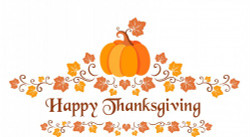Gratitude Throughout Time and Space
Posted by The Wish Pearl on 2018 Oct 30th
Sometimes it appears that the United States has the monopoly on certain holidays because of common images in movies, some history books, and other depictions seeming to permeate cultures near and far.
Let’s first set something straight. The US was not the first country to celebrate Thanksgiving Day--that was Canada. In fact, the first US Thanksgiving was held forty years after that of Canada’s, which started in 1578. While it was similar to other European celebrations, it mimicked that of the US as early settlers to Canada partook of the late year harvest.
Over time, the Canadian Thanksgiving has adopted some traditions from the US holiday. Leading up to and during the Revolutionary War, many American colonists loyal to the British monarchy moved to Canada, bringing some Thanksgiving customs with them, including the iconic turkey. The menu at today’s Canadian Thanksgiving celebration involves many familiar foods to most Americans such as: stuffing, sweet potatoes, and pumpkin pie. In Canada, unlike in the US, it is held on the second Monday in October and not every province considers it to be a public holiday.
The Mid-Autumn Festival in China is commemorated around the 15th day of the eighth month of the lunar calendar, and typically falls in late September or early October, when the moon is at its fullest. It is there to express gratitude for the changing of the seasons. There are several differences between Mid-Autumn Festivals and American Thanksgivings. For one, the Chinese holiday is much older than the US or Canadian Thanksgiving, with the holiday’s roots traced back more than 2,500 years. Rather than pumpkin pie, the favorite Chinese dessert is moon cake, baked and filled with sesame seeds, ground lotus seeds, and/or duck eggs.
The world also has Erntedankfest, which is different from most Thanksgiving-type celebrations as it is not so family oriented. Usually put on by Catholic and Protestant Churches on the first Sunday in October, celebrations throughout Germany include: parades, fireworks, music, and dancing. While turkey is the favorite fowl among Americans, Germans are more likely to celebrate the harvest with chickens, hens, roosters, or geese.
Then take the island of Grenada, which also celebrates Thanksgiving, and although considerably different from American holiday origins, it is tied to that of the US. Political unrest in Grenada culminated in a 1983 military coup, and when popular Prime Minister Maurice Bishop was executed, the country was left in turmoil. Concerned about Cuban influence and the well being of some 800 American medical students enrolled at a university there, US President Ronald Reagan invaded the island on October 25, 1983. Having learned of the American tradition, Grenadians put together Thanksgiving feasts for American troops countrywide with that day permanently being named Thanksgiving Day.
On November 23, people in Japan celebrate a holiday similar to a combination of the US Thanksgiving and Labor Day. Known as Kinrō Kansha no Hi, or Labor Thanksgiving Day, it goes back more than 2,000 years to a ritual thanks for the first rice harvest of the season. Giving thanks for workers rights, Labor Thanksgiving Day officially became a holiday in 1948 and is celebrated in different ways.The city of Nagano, for example, hosts an annual labor festival drawing attention to human rights and the environment. In Tokyo, preschool students make crafts for its police force, with the festival still celebrated in private by the Imperial Family.
The West African country of Liberia, having been founded by freed American slaves in 1847, its culture and constitution are heavily influenced by the US, and it celebrates Thanksgiving. There is usually a church service, following a harvest crops auction, and a home cooked feast on the first Thursday in November. Because turkeys and pumpkins are hard to come by, roast chicken and mashed cassavas usually represent a traditional meal.
Off the eastern coast of Australia, there is another Thanksgiving celebrant country, Norfolk Island, with just over 2,000 people. This British penal colony of many was frequented by US whalers and traders. In the late 1800s, trader Isaac Robinson visited the island and held a traditional Thanksgiving at a local church. On the fourth Thursday in November, residents now celebrate with a feast that is different from the traditional one, with pork, chicken, and bananas, although there is pumpkin pie.
People in South Korea celebrate a holiday very similar to the American Thanksgiving. Known as Chuseok Day, the event is held in mid to late September, typically spent with family, sharing a meal, and giving thanks to their ancestors while celebrating the autumn harvest. Traditional national customs are in evidence, including ancestor memorial services, and Korean wrestling, and circle dances.
Like in China, the equivalent to the American Thanksgiving in Vietnam is held on the 15th of the eighth month on the lunar calendar. According to Vietnamese folklore, the holiday, known as Têt-Trung-Thu Festival or the Children’s Festival, is held as a way for parents, busy with the harvest, to make amends to their children who may have felt neglected. Honorable mention goes to parts of the United Kingdom and the island of Puerto Rico, which also celebrate their versions of this popular holiday.
No matter whether or not we celebrate a formal Thanksgiving, we at The Wish Pearl believe that there is much for which to be thankful. Above all, we are thankful for you, our clients, and wish you the best at this exciting time of year. Visit us at www.thewishpearl.com .


